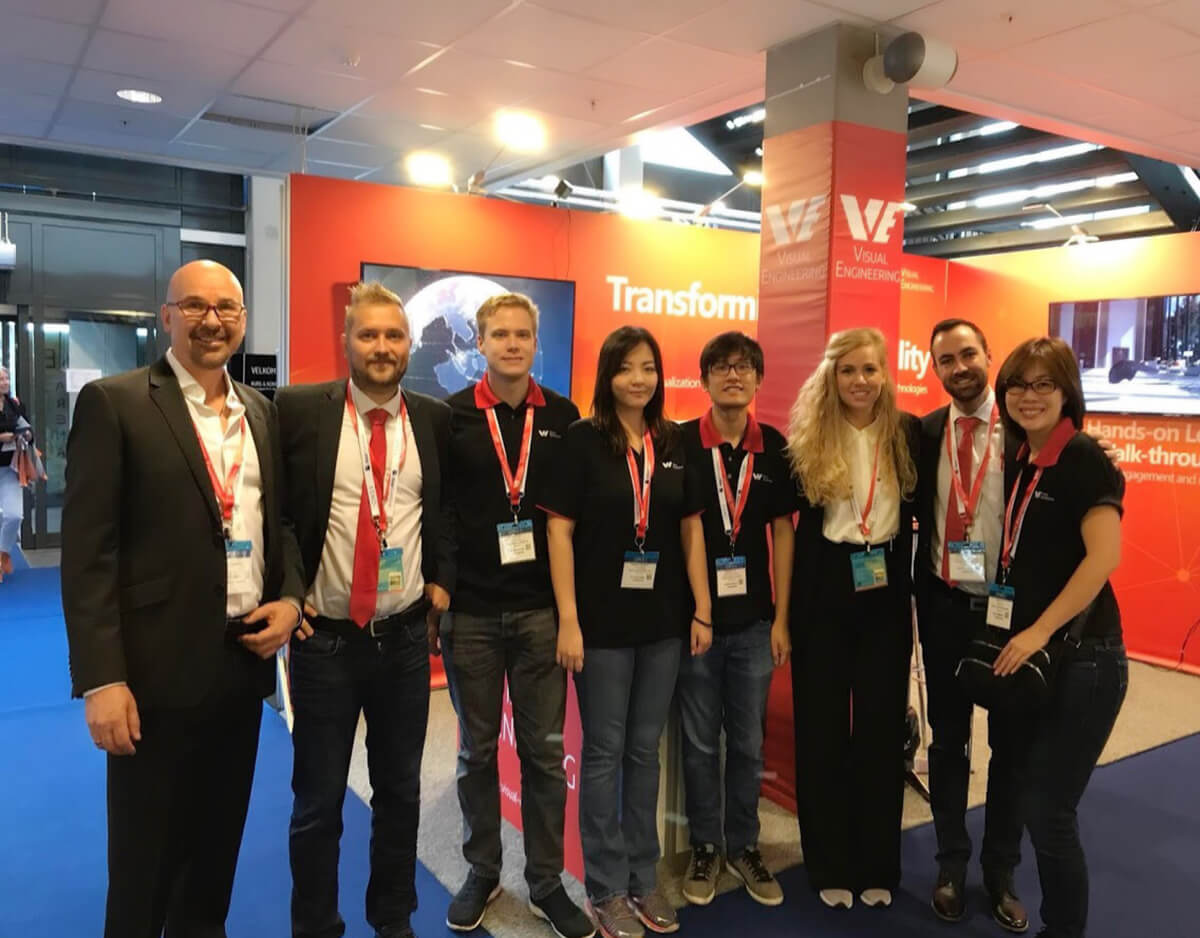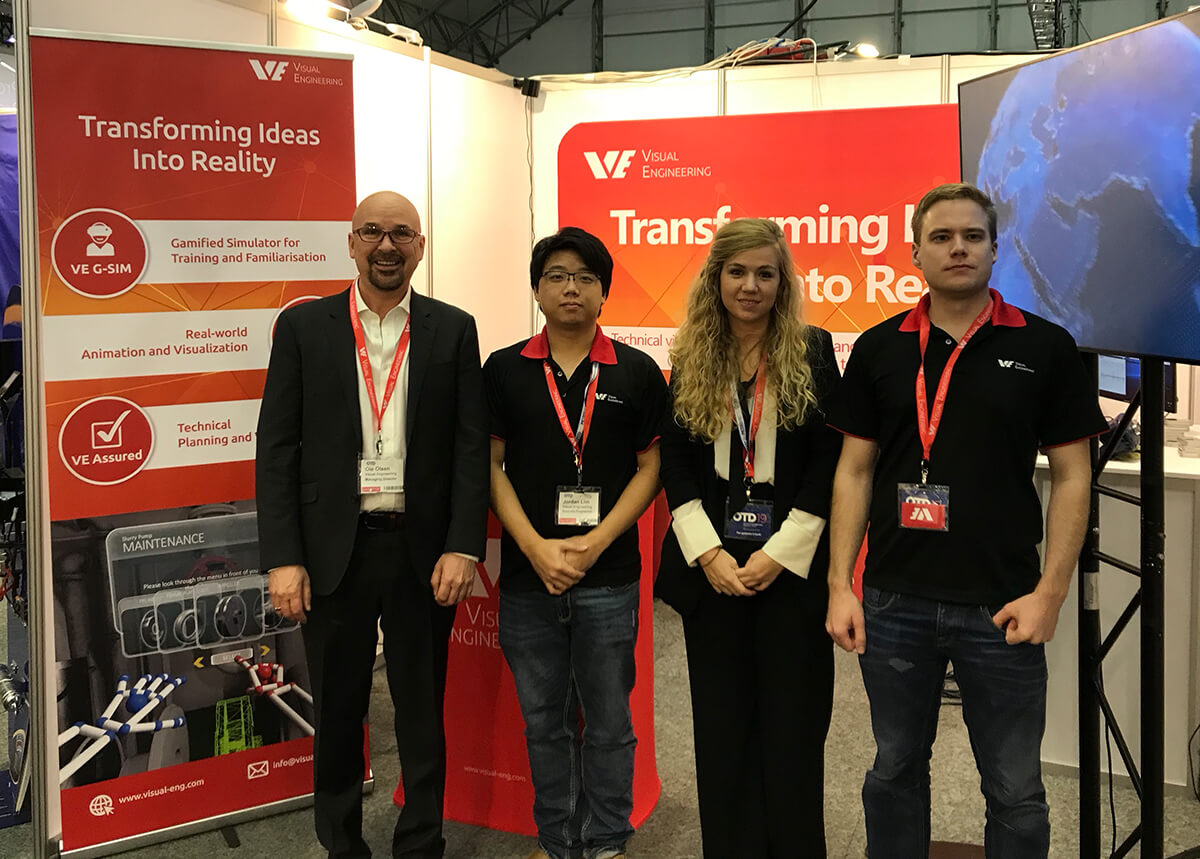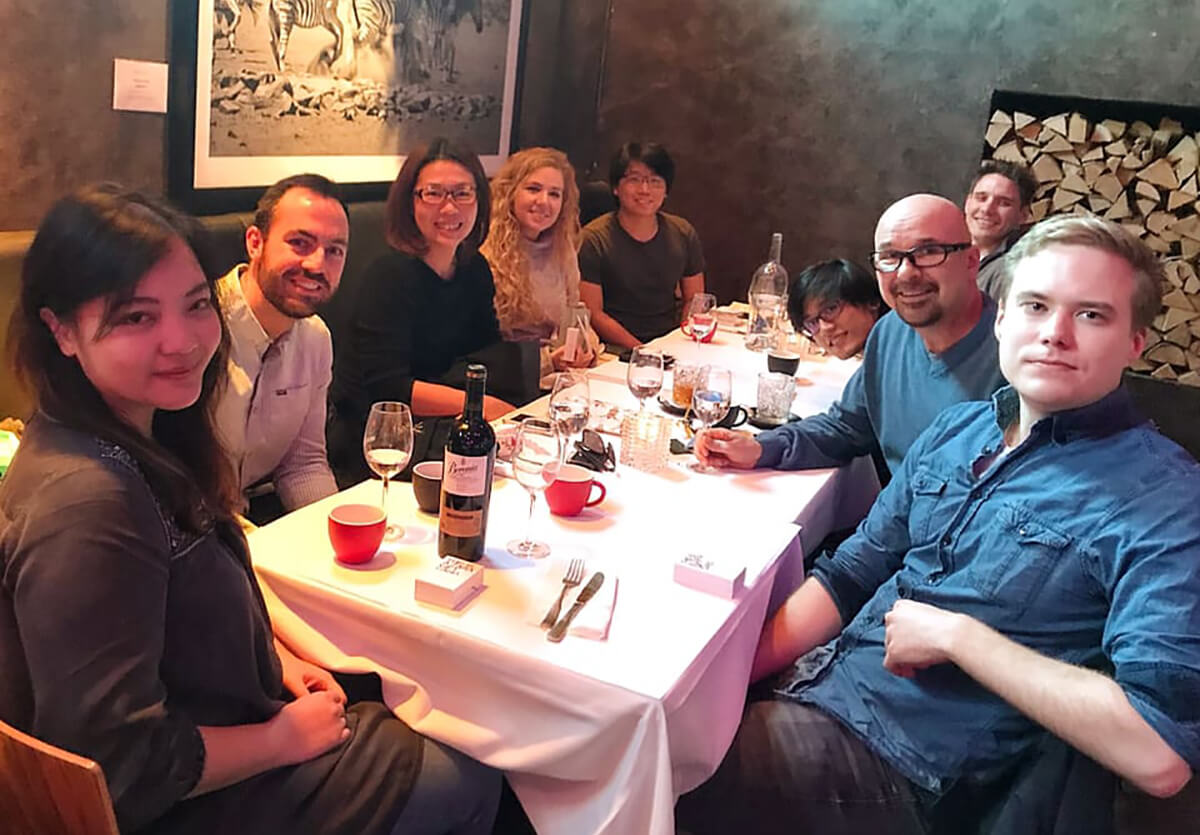Internships are great opportunities to gain valuable industry insights, expand one’s network, and experience life in the working world. For two DigiPen (Singapore) BS in Computer Science in Real-Time Interactive Simulation students, they got to do all that while living 6,300 miles away from home during their recent internship at Visual Engineering in Norway.
Visual Engineering is a digital reality solutions company in Norway that’s funded by a Singapore investment company. They specialize in creating photorealistic 3D visualization and simulation solutions, which final-year students Jordan Lim and Dominic Yip had the chance to work on during their internship.
Specifically, the two students worked on the company’s in-house R&D projects to create and test various gamified virtual reality (VR) familiarization and training simulation prototypes for companies in sectors like manufacturing, engineering, and construction. In their first two months in Norway, they worked together on building VR training simulator prototypes for shipping maintenance. This interactive training simulator allows workers to familiarize themselves with the steps and techniques that are needed in the event of actual maintenance. Instructions can also be embedded within the simulation to prompt and guide the trainees during use.
Technological advancements and the emergence of more affordable VR tools and accessories make it possible to customize these realistic simulations so that workers can be trained and tested for potentially dangerous situations, but with minimal risks. Without these technology solutions, real-world constraints result in limited access to on-site opportunities for trial-and-error learning. Furthermore, the nature of certain high-risk operations — from high-rise construction to maintaining infrastructure in remote locations — means that any mistakes made while carrying out certain tasks can be costly, or even fatal. Simulations are thus becoming increasingly valued for the immersive and controlled training experiences they can facilitate.

After the first project was completed, Jordan and Dominic were both assigned to different teams to continue developing other simulation prototypes at Visual Engineering. These included simulations to operate cranes, simulations to dissemble and repair military radios, and maintenance training simulations with hand-tracking features. Jordan and Dominic tapped into their game development experience from DigiPen (Singapore) to build these simulation prototypes, using game engines like Unity in the process. As the company was fairly new at the time, Jordan and Dominic were among the first programmers brought on by the Visual Engineering team. This was challenging for both parties initially, as it was the first time that the art and design teams had to collaborate with programmers.

“In the beginning, we had to explain the technical bottlenecks that we faced when building the simulations,” says Dominic. Jordan explains that artists are trained to create high-resolution animation models, but these files were usually much bigger than the optimized game models that had to be used for the simulations. Jordan and Dominic had to aid their colleagues in understanding the requirements and limitations of building gamified simulators and explain why certain things had to be done in a certain way. Thankfully, the collaborative and trusting work culture meant that everyone listened to one another’s needs, and the workflows began to run smoothly.
Reflecting on their overseas internship experience, both students agree it was something they really enjoyed. “The feeling of working overseas versus visiting a country as a tourist is totally different,” says Jordan. “When you’re working overseas, you get to experience a whole different culture and working environment from what you’re used to back home.” Jordan and Dominic are thankful that the working culture in Norway is less aggressive than the fast-paced way of life in Singapore and had no problems adjusting to the new environment.

Both students also loved the cooler weather, which was a welcome change from Singapore’s perpetual summer. Instead, what they struggled to get used to were the expensive taxes and high cost of living. “I missed how cheap and easily accessible food is in Singapore,” says Dominic. “In Norway, we had to prepare our own meals as much as possible in order to cut costs.”
Today, both students are back on campus to clear the rest of their modules before graduating. While both of them were offered full-time positions at Visual Engineering at the end of their internship, only Dominic accepted. “The opportunity to work overseas and collaborate with people from all over the world is very satisfying for me,” says Dominic. As for Jordan, he plans to work in Singapore once he graduates.
Jordan and Dominic’s supervisor, Visual Engineering team lead Kjell Morten Aas, says DigiPen (Singapore) students should be encouraged by the growth of virtual reality and related technologies, as it will continue to create exciting career opportunities for the skills they are learning. “AR, VR, and MR technology adoption by manufacturing, engineering, medical, and even retail is only at its beginning,” Kjell says. “Graduating students should also consider the potential outside gaming when planning their career. The skills and knowledge they have acquired can be used in a much bigger way that can make a significant difference to business performances and human life.”